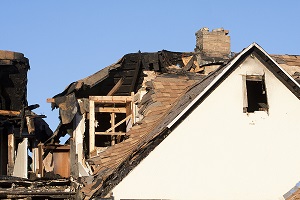Dwelling Limit and Surge Impact – New Strains for Homeowners Insurance

Since the inception of the coronavirus pandemic in early 2020, property values have been rising at the fastest rate since before the Great Recession. At the same time, an inflationary economy has put a strain on global supply chains, ultimately affecting reconstruction costs. This article discusses how your property insurance dwelling limit could be impacted by rising property values and how rising supply costs can subsequently affect home reconstruction costs.
What Is Dwelling Coverage?
First, it’s important to understand what a dwelling limit is and what it covers in a standard homeowners policy.
Dwelling coverage refers to the part of your homeowners insurance policy that covers the cost to repair or rebuild your house. According to Insurance Information Institute, dwelling coverage is a standard part of your homeowners policy, along with coverage for personal belongings, liability protection and additional living expenses. Coverage is available for perils listed in the policy, such as fire, hail and lightning. It is also common for policies to provide coverage for garages or other detached structures.
Property Values and Your Dwelling Limit
As mentioned previously, your dwelling limit will pay to replace the actual structure of your home using the associated costs of construction, materials and labor. This is important to keep in mind, as rising property values can change how high of a dwelling limit you may need for your home.
According to Investopedia, your dwelling coverage limit should be equal to the replacement cost of your home based on the cost to rebuild. This can differ from the price of your home.
While your property’s market value may increase, your house itself may subsequently depreciate. This real property value is the actual cash value (ACV), which prices your property at market value minus depreciation. Depreciation may concern elements of your home such as:
Roofing
Plumbing, electrical and HVAC systems
Floorboards
Alternatively, your dwelling limit may cover the replacement cost value (RCV). This method prices the cost to fix your home at the current market value for labor and materials. It’s important to ask your insurance professional if RCV is a coverage option for your dwelling limit. That way, you can receive a significant reimbursement to rebuild your home in the event of a loss.
A less common coverage option is the guaranteed or extended replacement cost (GRC/ERC). Similar to the RCV, this dwelling limit option also ensures that your carrier pays a specified percentage above the policy limit to rebuild your home. Normally, this option is reserved in the event of a regional disaster such as a hurricane. Although the most expensive option, this will protect you from increases in building materials and labor costs during an extreme weather event.
Supply Costs and Surge Impact
Disastrous weather events such as a flood or a hurricane can have a “black-swan” effect on a region of the country. Supply costs and reconstruction costs normally rise as demand for labor and construction materials increases substantially. This post-disaster phenomenon is known as demand surge.
According to CoreLogic Intelligence, demand surge typically has a greater effect on labor costs than material costs. Therefore, the availability of labor is a strong indicator towards a region’s ability to recover from a disastrous event.
The recent supply chain disruptions and inflation rates haven’t exactly been typical. According to the National Association of Home Builders, lumber price increases have added more than $18,600 to the cost of a new home. These price hikes and supply chain troubles may complicate disaster recovery for homeowners. For example, according to the Wall Street Journal, approximately 1,000 homes were destroyed by the Marshall Fire in Colorado, but because rising construction costs and supply chain issues are resulting in higher rebuilding costs, some homeowners may not have adequate insurance.
Prepare for the Worst
Natural disasters happen when we least expect them to. Although advancements in storm tracking and CAT data now allow us to prepare diligently, these events can have a substantial impact on your home and your recovery efforts.
Need help getting prepared? Talk with a BNC personal insurance specialist today to find out if you have adequate coverage.







